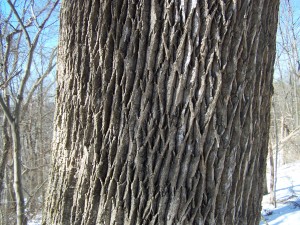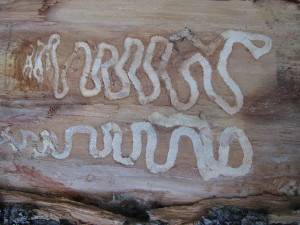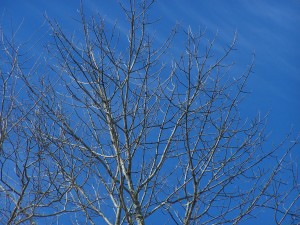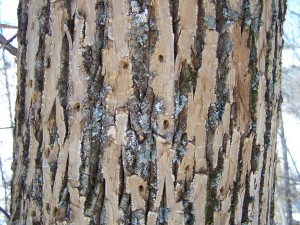The ash trees in our state of Pennsylvania are under attack! The villain is discreet but extremely effective. Millions of ash trees have been killed to date and chances are all true ashes will have perished when it is said and done. The worst part may be that you never saw it coming. In fact, if the trees in your own backyard have not been affected, you might not of even known it was happening. But rest assured, the ash trees as we know them are dying and there is not much you can do to stop it. The Emerald Ash Borer (EAB) is the ash tree killer that was first discovered in the United States in the summer of 2002 in Michigan. These super creeps were most likely doing damage a decade before their discovery. Native to Asia, there is no native or natural predator here in the states that can stop the pest. Pennsylvania confirmed the presence of EAB in the western part of the state in 2007. The pest is swiftly and successfully destroying our ash in more than half of the 67 counties in PA to date.
The EAB larvae damage the trees as they consume the inner bark, known as phloem, creating S shaped galleries. This process ultimately girdles the entire tree. The phloem transports nutrients and water within the tree. The adult EAB emerge from the tree leaving a D shaped hole in the outer bark in May and early June. The adult EAB is metallic green in color and is approximately 1/8″ in length. The winged pest will fly in swarms to new territory leaving standing dead trees in their wake. At some point woodpeckers will discover the larvae in the tree. Flecking the outer bark away, they eat their fill as they methodically work the entire tree over. This flecking, in many cases, is the first sign of an EAB infestation. Other signs of an infestation are dying and dead branches or epicormic shoots sprouting from the main stem of the tree.
Determining whether the trees you own are in fact ash, you will need to know the identifying characteristics of the tree. In the winter months you will notice the twigs growing opposite each other from the branches in the crown of the tree. The twigs are more stout than those of maples which also display opposite branching. The buds on the maples twigs are more visible than those of the ash. The bark is furrowed or scaly and has diamond shaped ridges on mature trees. The bark is grayish in color and the branches are more smooth than the main stem. In the summer months the tree displays compound leaves containing about 5 to 11 leaflets, similar to walnut, butternut, hickory and locust trees. The male ash tree produce seeds contained in wing like samaras. Now that you have identified the ash trees, the time to act is now. If you own property and have ash growing there, you have a few options, but be sure to contact your specific county extension office.
First, you could let nature take its course. The woodpeckers will fly in and feed on the EAB larvae, flecking away the outer bark. The standing dead tree can be utilized as a home for cavity nesting wildlife. The wood will recycle itself into the landscape and new trees and plants will take advantage of the open space available. Second, if the trees are marketable, you can have them cut and sold to your local lumber company. This is a great option for any landowner with valuable timber that has not yet been obliterated by the EAB. The ash will deteriorate rapidly once blighted, leaving the wood invaluable. Acting sooner than later will give you an opportunity to put unexpected money in your pocket. This will create some valuable and popular firewood as well. The wood splits easier than most and produces quality heat for your home. Do not move infested wood outside of your county without first contacting your specific county extension office.
Finally, if the tree poses a danger to you, your home or others you should be sure to act responsibly. A licensed arborist can safely take down trees that are growing in precarious locations. They can grind the tree into mulch to be used around your home. Woodworkers might be interested in the wood for various projects. A chainsaw carver could create a piece of art for you. A few single trees that may have sentimental or esthetic value could be injected with insecticide, also by a licensed arborist. This method can be costly, with the need to continue treatments every few years. Please contact your specific county extension office before moving any suspect wood. Keep yourself educated on what pests might be affecting the trees of Pennsylvania. Do your part to protect your trees and property.

Adult Emerald Ash Borer






Please,please,please revise this article! The LAST thing any homeowner with a positive ID of emerald ash borer should do is harvest a stricken ash tree and sell the wood off! This only transports the insect to new locations and further exacerbates the problem. The proper procedure is to notify the local Penn State Extension office for your county or the Pennsylvania DCNR (Department of Conservation and Natural Resources). These offices will issue proper instructions for the disposal stricken ash trees in your area.
Nancy Gaspari,
Penn State Extension Master Gardener, Chester County
Thank you for your insight! Links have been added to the article for contacting specific county extension offices.
http://extension.psu.edu/
I bought property thinking I could get some timber off of it, but alot of trees are dying fast and don’t know how or what to do about it. I was hoping you could help me.
You could reach out to your county extension office here http://extension.psu.edu/
Contact a consulting forester here http://dcnr.state.pa.us/forestry/yourwoods/consultingforesters/index.htm Contact a neighbor who might be familiar with trees and potential disease and insect problems in your area. Good luck